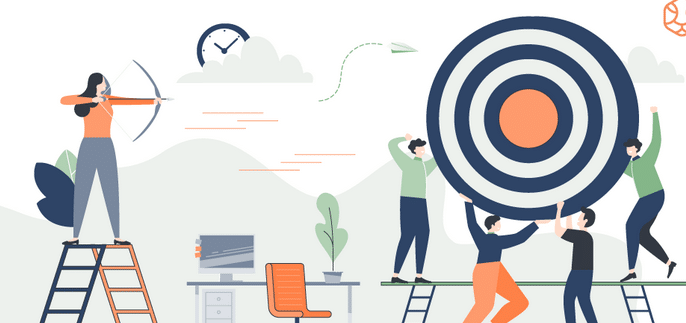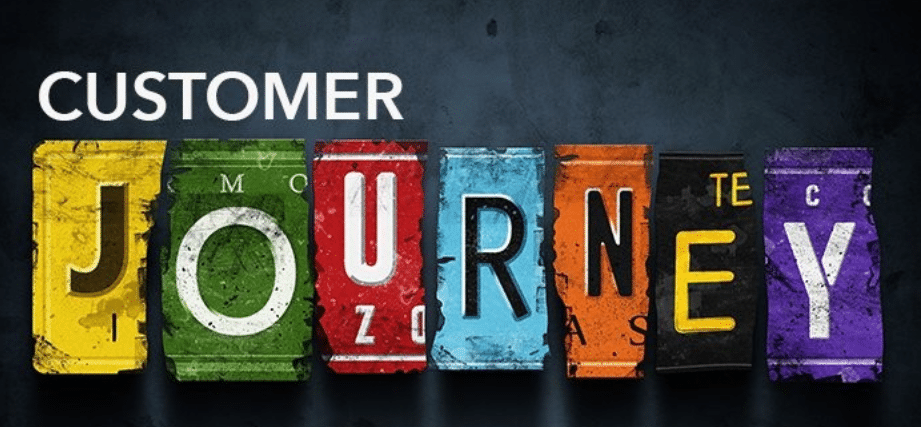
Table of Contents
Your Marketing Budget: The Power of Cooperative Advertising for Your Dealership
In today’s competitive market, it’s more important than ever for dealerships to find effective ways to increase their visibility and sales. That’s where Cooperative Advertising comes in.
Cooperative Advertising is a cost-sharing arrangement between manufacturers and dealerships to promote products and services. It offers numerous benefits for lawnmower and tractor dealerships, including increased exposure, enhanced credibility, and higher sales.
In this blog post, we’ll dive deeper into the world of Co-Op advertising and provide valuable insights on how lawnmower and tractor dealerships can maximize their advertising efforts. We’ll discuss the various Co-Op advertising programs offered by manufacturers, how to qualify for Co-Op advertising funds, and best practices for creating effective campaigns.
By the end of this blog post, you’ll have a better understanding of how to leverage Co-Op advertising to increase your dealership’s visibility and sales. So, let’s get started!
Understanding Co-Op Advertising
Cooperative Advertising, also known as Co-Op Advertising or Marketing Co-Op, is a marketing strategy where manufacturers and dealers or retailers share the costs of advertising to promote their products and services. The concept behind Co-Op Advertising is that both parties benefit from increased visibility and sales.
Manufacturers typically offer Co-Op Advertising programs and policies to their dealerships, which provide guidelines on how the funds can be used and what types of advertising are eligible. The amount of funding available to dealerships can vary based on factors such as the manufacturer’s marketing budget, the dealership’s sales volume, and the type of advertising being used.
Lawnmower and tractor manufacturers such as Cub Cadet, Kubota, Exmark , and Scag offer Co-Op Advertising programs to their dealerships. For example, Cub Cadet’s Co-Op Advertising program provides funding for advertising in local newspapers, magazines, and online platforms. Kubota’s program offers funding for advertising on television, radio, and outdoor billboards. Exmark’s program allows dealerships to use Co-Op Advertising funds for dealership websites, online advertising, direct mail campaigns, and event sponsorships. Scag’s program provides funding for advertising on social media, local radio stations, and outdoor signage.
Manufacturers may also have policies in place to ensure that the Co-Op Advertising funds are being used effectively. For example, some manufacturers may require that the manufacturer’s logo or name is included in the advertisement alongside the dealership’s logo or name. Other manufacturers may require that the advertisement meets certain design or content guidelines.
By participating in Co-Op Advertising programs offered by manufacturers, lawnmower and tractor dealerships can take advantage of cost-effective advertising opportunities and increase their visibility and sales. However, it is important for dealerships to understand the guidelines and policies associated with each program in order to make the most of their Co-Op Advertising funds.
Maximizing Co-Op Advertising Opportunities
Co-Op Advertising can be a powerful tool for lawnmower and tractor dealerships to increase their visibility and sales. To make the most of Co-Op Advertising opportunities, dealerships need to understand how to qualify for funds, choose the right advertising channels, and create effective advertising campaigns.
How to Qualify for Co-Op Advertising Funds
Qualifying for Co-Op Advertising funds varies by manufacturer and program. Typically, manufacturers require that dealerships meet certain criteria, such as purchasing a minimum amount of inventory or meeting certain sales targets. Dealerships may also need to submit advertising proposals for approval before receiving funding. It’s important for dealerships to carefully review the guidelines and requirements for each Co-Op Advertising program to ensure they meet the necessary qualifications.
How to Choose the Right Advertising Channels for Your Dealership
Choosing the right advertising channels is crucial for a successful Co-Op Advertising campaign. Dealerships should consider their target audience, budget, and marketing goals when selecting advertising channels. Some effective channels for lawnmower and tractor dealerships may include local newspapers, radio stations, outdoor signage, and online platforms such as social media and search engines. If you are too busy running your dealership to manage your digital advertising, we can help! Contact us today to get started!
Tips for Creating Effective Co-Op Advertising Campaigns
Creating effective Co-Op Advertising campaigns requires careful planning and execution. Some tips for success include:
- Clearly define your marketing goals and target audience
- Use eye-catching visuals and messaging that speaks to your target audience. A lot of manufacturers have pre-approved digital ads to choose from.
- Include both the manufacturer’s and dealership’s logos or names in the advertisement.
- Adhere to the manufacturer’s guidelines for design and content.
- Track and measure the effectiveness of your advertising campaigns to make adjustments as needed.
By following these tips and taking advantage of Co-Op Advertising opportunities, lawnmower and tractor dealerships can increase their visibility and sales while minimizing their advertising costs.
Best Practices for Co-Op Advertising
Track and Measure the Success of Co-Op Advertising Campaigns
One of the key benefits of Co-Op advertising is the ability to stretch your marketing dollars by sharing the costs with manufacturers. However, to ensure that you’re getting the most out of your Co-Op advertising investment, it’s important to track and measure the success of your campaigns.
To do this, dealerships can use a variety of metrics to evaluate their campaign performance. For example, tracking impressions can help you understand how many people saw your ad, while clicks can indicate how many people were interested enough to visit your website. Conversions, such as form submissions or phone calls, can help you gauge how many people ultimately acted as a result of your ad.
By monitoring these metrics, dealerships can make informed decisions about how to optimize their Co-Op advertising campaigns for better results. For example, if you notice that your ad is getting a lot of impressions but not many clicks, you may want to consider tweaking your ad copy or design to make it more compelling. If you’re getting a lot of clicks but few conversions, you may want to review your landing page to ensure it’s optimized for conversion.
Overall, tracking and measuring the success of Co-Op advertising campaigns is crucial for dealerships to understand what’s working and what’s not, and make informed decisions about how to improve their campaigns for better results.
Common Mistakes to Avoid When Using Co-Op Advertising
Not adhering to manufacturer’s guidelines: Many manufacturers have specific guidelines for the design and content of Co-Op Advertising campaigns. Dealerships that don’t follow these guidelines risk having their ads rejected or not approved for reimbursement. To avoid this mistake, dealerships should carefully review the guidelines and ensure that their campaigns adhere to them.
Not properly tracking and reporting on campaign performance: It’s essential to track and measure the success of Co-Op Advertising campaigns. Dealerships should monitor metrics such as impressions, clicks, and conversions to understand the impact of their advertising efforts. If they don’t properly track and report on campaign performance, they won’t be able to make informed decisions about how to optimize their campaigns for better results.
Spreading advertising budget too thin across too many channels: While it’s important to choose the right advertising channels, it’s equally important not to spread the budget too thin across too many channels. This mistake can result in weaker overall performance, as the budget is not sufficient to produce meaningful results on any one channel. Instead, dealerships should focus on a few key channels that are most likely to reach their target audience and produce the best results.
How to Build and Maintain Strong Relationships with Manufacturers
Building and maintaining strong relationships with manufacturers is crucial for lawnmower and tractor dealerships to get the most out of Co-Op Advertising. Dealerships should establish clear lines of communication with their manufacturers to understand program changes, updates and requirements. This helps dealerships stay up to date with the latest offerings and opportunities available to them.
When you are transparent and responsive in communication with manufacturers can help to build trust and strengthen relationships. Dealerships should provide regular updates on their advertising campaigns’ performance and make sure that they are meeting the program’s requirements to maintain eligibility for future funding.
Maintaining a good relationship with the manufacturer also helps in getting more funding or increased co-op funding. It could also help in accessing exclusive offers, promotions, and discounts. Hence, it is essential for dealerships to take the necessary steps to establish and maintain strong relationships with manufacturers to maximize the benefits of Co-Op Advertising.
Maximize Your Co-Op Advertising for Success
Co-Op advertising can be a powerful tool for lawnmower and tractor dealerships to increase their visibility and sales, while minimizing their advertising costs. By understanding how Co-Op advertising works, how to qualify for funds, how to choose the right advertising channels, and how to create effective campaigns, dealerships can maximize their opportunities for success.
In this blog post, we’ve covered the basics of Co-Op advertising, including how it works, the types of programs offered by manufacturers like Cub Cadet, Kubota, Exmark, and Scag, and best practices for tracking campaign success, avoiding common mistakes, and building strong relationships with manufacturers.
By taking advantage of Co-Op advertising opportunities and following these best practices, lawnmower and tractor dealerships can improve their marketing performance and drive business growth. So don’t wait – start exploring your Co-Op advertising options today and see the benefits for yourself!
Frequently Asked Questions About Cooperative Marketing & Cooperative Advertising
What is cooperative advertising and how does it work?
Cooperative advertising is an advertising technique in which two or more businesses share the cost of an advertisement. It works by the businesses pooling their resources to create a joint advertisement that promotes each other’s products or services.
What is an example of cooperative advertising?
An example of cooperative advertising is when a lawnmower dealership and a tractor dealership agree to run a joint advertisement in a local newspaper. The ad might feature both dealerships’ logos and products and promote a sale or special promotion.
What are the types of cooperative advertising?
There are two types of cooperative advertising: vertical and horizontal. Vertical cooperative advertising involves businesses at different levels of the supply chain (ex: a manufacturer and a retailer) collaborating on an ad. Horizontal cooperative advertising involves businesses at the same level of the supply chain (ex: two retailers) collaborating on an ad.
What are the advantages and disadvantages of cooperative advertising and marketing?
The advantages of cooperative advertising and marketing include cost savings, increased exposure, and access to new markets. The disadvantages include potential conflicts between businesses, difficulty coordinating efforts, and loss of control over the messaging and branding.
What is cooperative marketing?
Cooperative marketing is a marketing technique in which two or more businesses collaborate to promote their products or services. The businesses may pool their resources to create joint advertising campaigns, participate in joint promotions, or share customer data.
Cooperative Marketing in Agriculture
Cooperative marketing in agriculture is a strategy in which farmers or agricultural businesses collaborate to market their products. This may involve creating a cooperative that markets products on behalf of its members, or simply sharing resources to promote individual products.
What is the importance of cooperative marketing?
The importance of cooperative marketing is that it allows businesses to share resources and reduce costs while still reaching a wider audience. It also allows businesses to access new markets and customer segments that may have been difficult to reach on their own.
What is the function of cooperative marketing?
The function of cooperative marketing is to increase the efficiency and effectiveness of marketing efforts by pooling resources and expertise. It allows businesses to share costs and risks while still reaching a wider audience and achieving marketing objectives.
What are the objectives of cooperative marketing and advertising?
The objectives of cooperative marketing and advertising include increasing sales, reaching new customers, improving brand awareness, and reducing marketing costs. It may also involve building relationships with other businesses in the industry and improving overall market competitiveness.
































